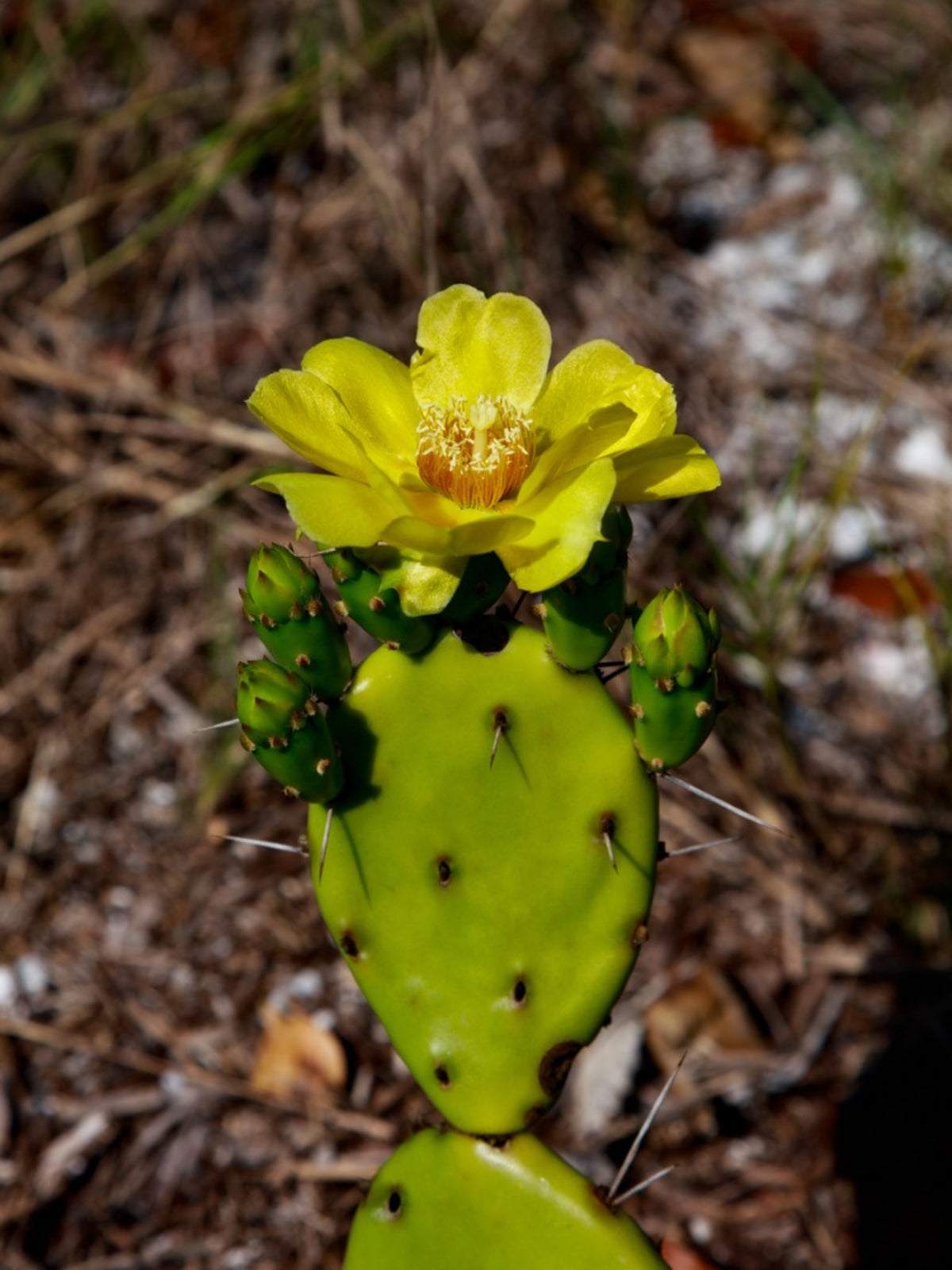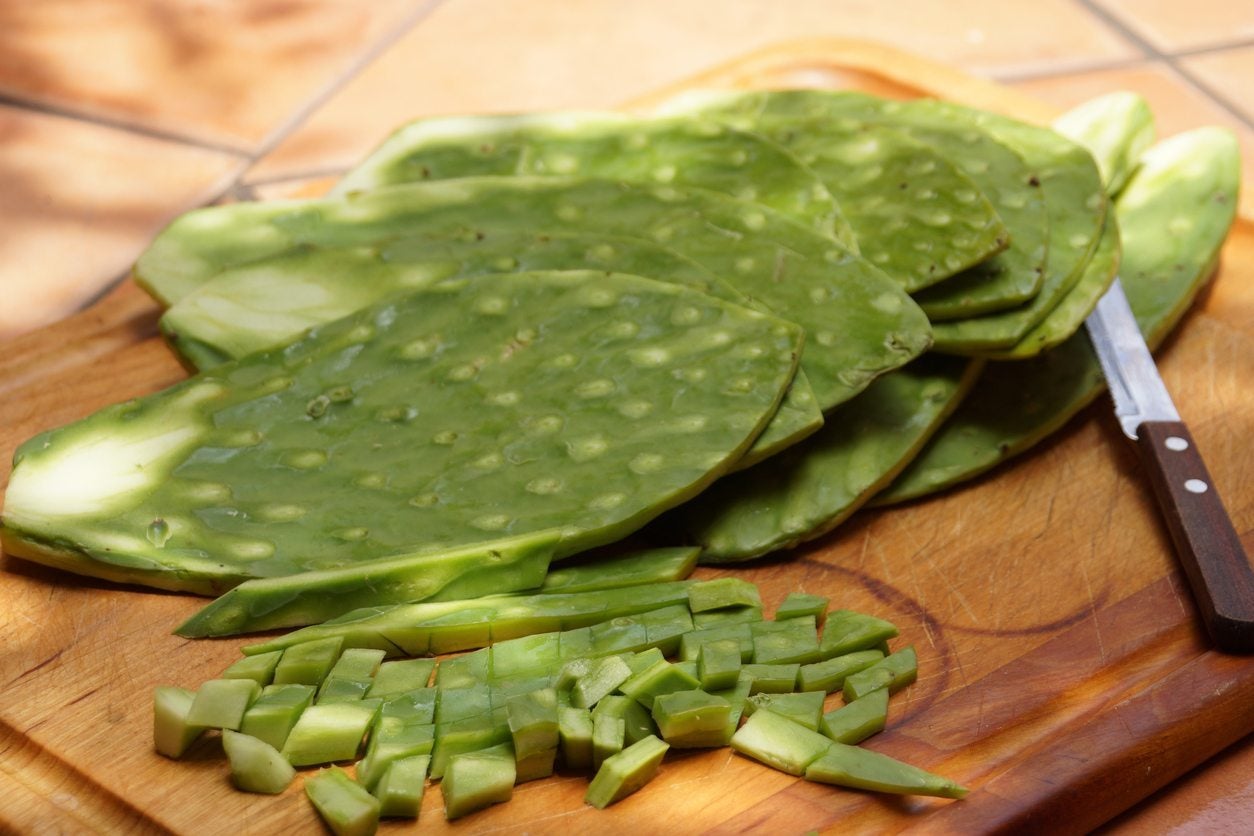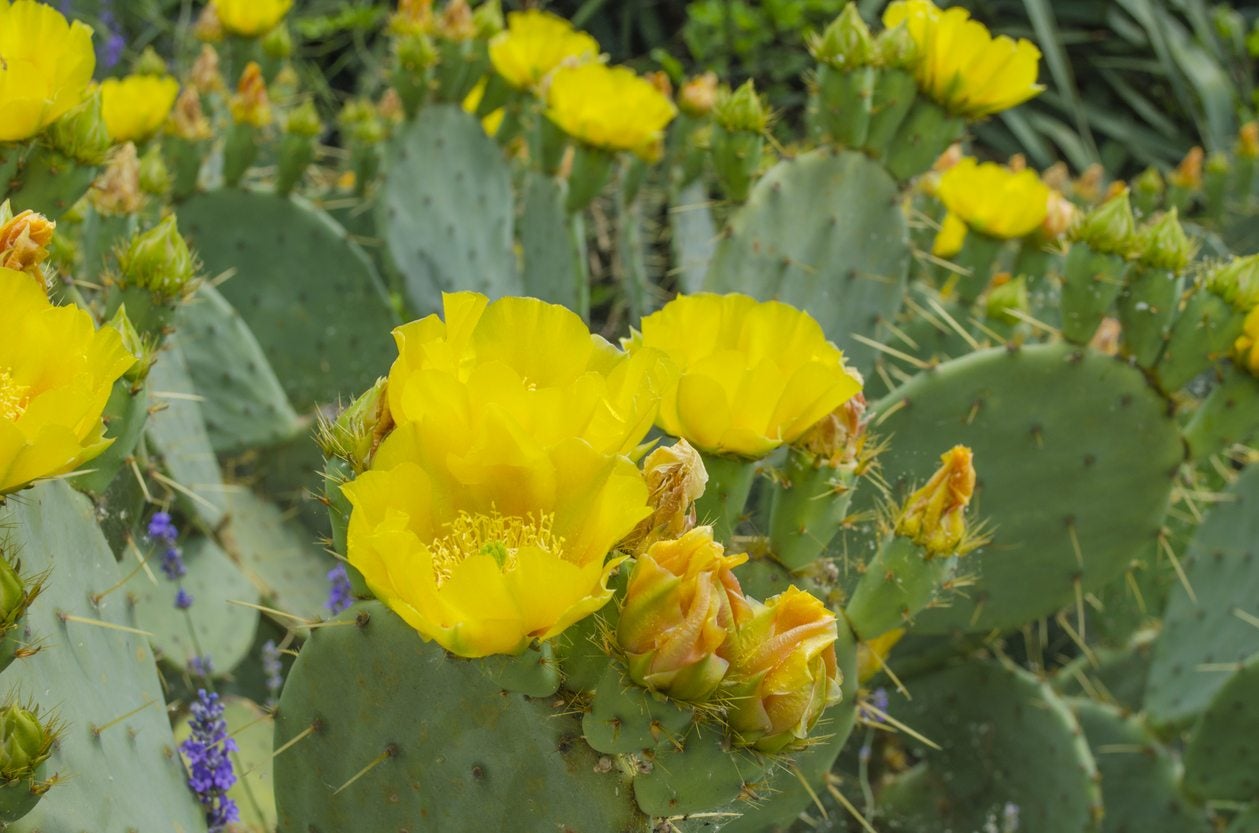Tulip Prickly Pear Info: Guide To Growing Brown Spined Prickly Pears


Opuntia are one of the largest genus of cactus. They are widespread and found in a variety of environments; however, their biggest concentration is in the desert tropical Americas. The best known of the Opuntia is the prickly pear, but its cousin the tulip prickly pear is also notable. What is a tulip prickly pear? This cactus is also known as brown spined prickly pear for its pronounced rust to reddish brown spines. If you live in warm, arid regions, learn how to grow brown spined prickly pear and add its unique flowers and medium stature to your desert garden.
What is a Tulip Prickly Pear?
Opuntia phaecantha is a medium sized cactus. It matures to a shrub-like mounding form that may be 5 feet tall by 15 feet wide (1.52 by 4.57 m.). The stems or joints attach to pads and can create quite a thicket over time. The spines are both persistent and thicker – short-term glochids set in areoles. Joints are bluish-green but can develop a reddish tinge in cool weather. The bright, showy flowers develop into fruits called "tunas." These are red to purple and as long as an index finger with juicy, sweet pulp. One of the more important aspects of tulip prickly pear info is its preference for sun, alkaline soil and warm ambient temperatures. However, the plant can withstand occasional freezes.
Tulip Prickly Pear Care
Like other prickly pears, growing brown spined prickly pears is easy. This prickly pear is adapted to United States Department of Agriculture zone 7 and up. These Opuntia are found growing widely in the Gobi Desert. They like to be quite hot and dry, and thrive when precipitation is infrequent. That is because they store moisture in their thick pads. The plants also have waxy skin that prevents evaporation and spines that help conserve moisture. The cells of the plant also contain more photosynthetic material, called chloroplasts, than leafed plants. This characteristic makes them uniquely adapted to long days of sun, which is converted into plant sugars. Brown spined prickly pear can also grow as far north as Nebraska, Montana and Colorado. This is an easy-to-care-for plant and only a few tips on how to grow brown spined prickly pear are necessary for success in these regions. The plant thrives in full to partial sun, in well-drained soil. Boggy or slow draining soil is the Opuntia's Achilles heel and can cause rot and even death in the plant. Site it where there will be no collecting water and the plant receives plenty of sunshine throughout the day, at least 6 to 8 hours. Cactus rarely need fertilizer, but if you wish to encourage flowers and fruit, feed the plant in late winter to early spring with a balanced cactus food. Water plants when the top 3 inches (7.6 cm.) of soil is dry to the touch. Minimize watering by half in winter. Other than that, watching the plant for signs of mealybugs and scale are the primary care issues. Tulip prickly pear care is very straightforward and these plants will reward you with a number of seasonal attributes to brighten up your landscape.
Gardening tips, videos, info and more delivered right to your inbox!
Sign up for the Gardening Know How newsletter today and receive a free copy of our e-book "How to Grow Delicious Tomatoes".

Bonnie Grant is a professional landscaper with a Certification in Urban Gardening. She has been gardening and writing for 15 years. A former professional chef, she has a passion for edible landscaping.
-
 Looking For Plants To Give You The Soft And Fuzzies? Try These 5 Fuzzy Leaf Plant Options
Looking For Plants To Give You The Soft And Fuzzies? Try These 5 Fuzzy Leaf Plant OptionsLovers of texture, drama, silver foliage and tactile plants will adore these special sensory garden additions. These fuzzy leaf plant options will leave you all aglow
By Susan Albert
-
 Get Ready For A Summer Of Hummers! Grow These Full Sun Hummingbird Plants and Flowers
Get Ready For A Summer Of Hummers! Grow These Full Sun Hummingbird Plants and FlowersIf you’re lucky enough to enjoy a sunny backyard, make sure you are maxing out on your pollinator opportunities and grow these full sun hummingbird plants and flowers
By Tonya Barnett
-
 Growing Cold Hardy Eastern Prickly Pear Cactus
Growing Cold Hardy Eastern Prickly Pear CactusFor info on growing cold hardy eastern prickly pear cactus, look no further, just click here!
By Becca Badgett
-
 Spineless Prickly Pear Info – Tips For Growing Ellisiana Prickly Pears
Spineless Prickly Pear Info – Tips For Growing Ellisiana Prickly PearsIf you are among the many gardeners who like cactus but don’t like spines, it may be time to consider installing ellisiana cactus in your backyard, better known as spineless prickly pear. Click here for information on growing ellisiana prickly pear.
By Teo Spengler
-
 Engelmann Prickly Pear Info – Learn About Growing Cactus Apple Plants
Engelmann Prickly Pear Info – Learn About Growing Cactus Apple PlantsEngelmann prickly pear, also commonly called cactus apple plants, is a wide-ranging species of prickly pear. This is a pretty plant for desert gardens, and it will grow at a moderate rate to fill in large spaces. Learn more about it in this article.
By Mary Ellen Ellis
-
 Cow’s Tongue Plant Care: How To Grow A Prickly Pear Cow’s Tongue
Cow’s Tongue Plant Care: How To Grow A Prickly Pear Cow’s TongueFolks that live in hot climates often utilize plants that are drought tolerant. A great example is a cow’s tongue prickly pear. Besides having a fabulous tongue in cheek name, it is very tolerant of heat and dry conditions, plus it makes a great barrier. Learn more here.
By Amy Grant
-
 Beavertail Cactus Care – How To Grow A Beavertail Prickly Pear Cactus
Beavertail Cactus Care – How To Grow A Beavertail Prickly Pear CactusBeavertail prickly pear cactus is a clumping, spreading cactus with flat, grayish-green, paddle-like leaves. It glows with brilliant, rose-purple blooms in spring and early summer. Have we piqued your curiosity? Click here for more beavertail prickly pear information.
By Mary H. Dyer
-
 Harvesting Edible Cactus Pads – How To Pick Cactus Pads To Eat
Harvesting Edible Cactus Pads – How To Pick Cactus Pads To EatOpuntia produces several types of edibles. The fruits are delicious in jams and jellies. But can you eat cactus pads? Yes, the broad, succulent pads can be eaten raw or cooked. You just need to know how to pick cactus pads and how to prepare them. This article will help.
By Bonnie L. Grant
-
 Opuntia Barbary Fig Info: How To Grow A Barbary Fig Plant
Opuntia Barbary Fig Info: How To Grow A Barbary Fig PlantOpuntia ficus-indica is more commonly known as a Barbary fig, a variety of prickly pear cactus. This desert plant has been used for centuries as food, fending, and even dye. Growing Barbary fig plants is both rewarding and useful. Learn more in this article.
By Mary Ellen Ellis
-
 Opuntia Cactus Varieties: What Are Different Types Of Opuntia Cactus
Opuntia Cactus Varieties: What Are Different Types Of Opuntia CactusOpuntia is the largest genus in the cactus family. You will recognize most by their classic "prickly pear" appearance. Growing Opuntia in gardens adds desert appeal and unique flora to the landscape. Learn more about the plants in this article.
By Bonnie L. Grant